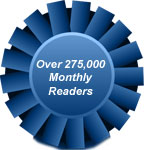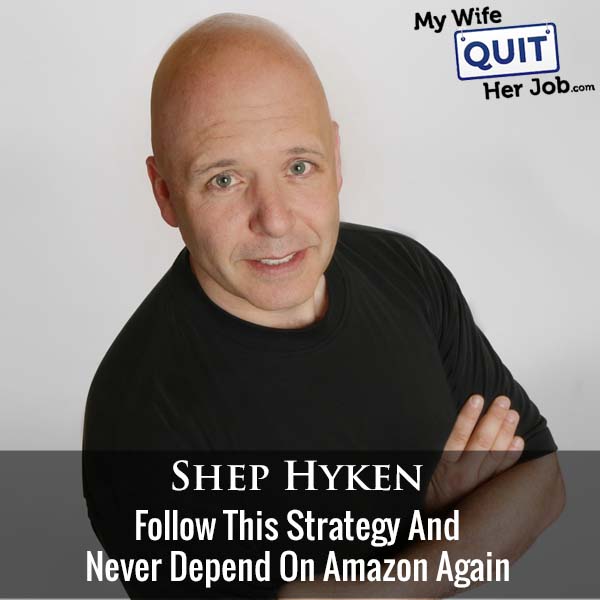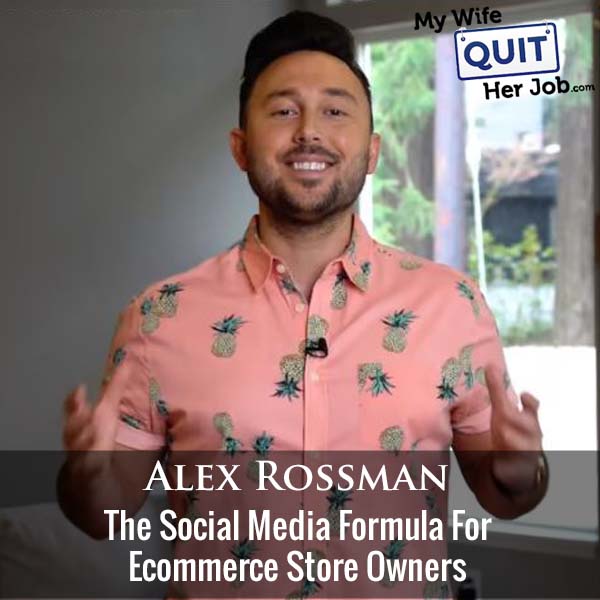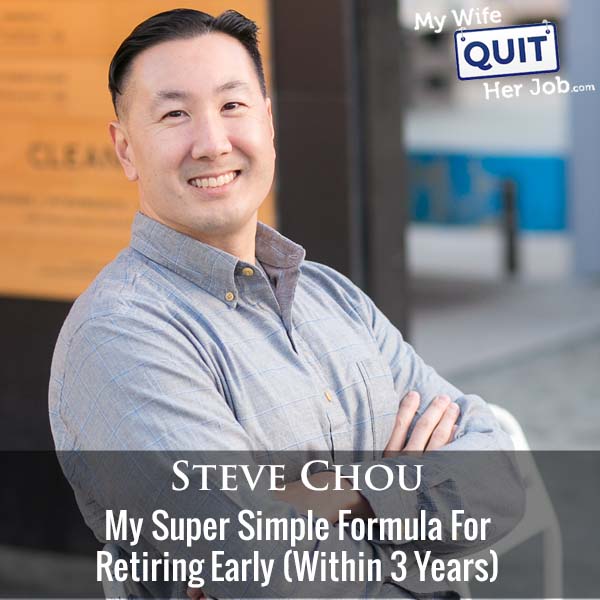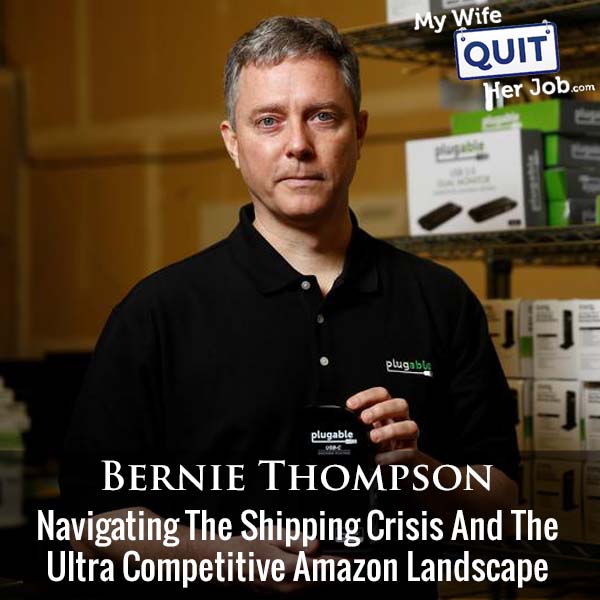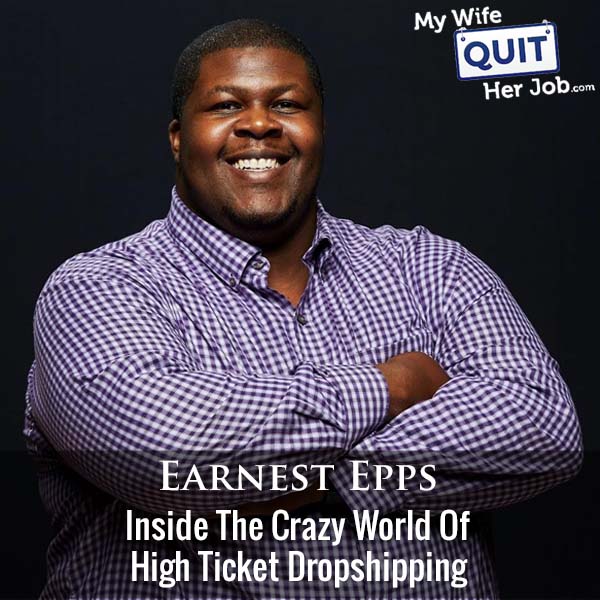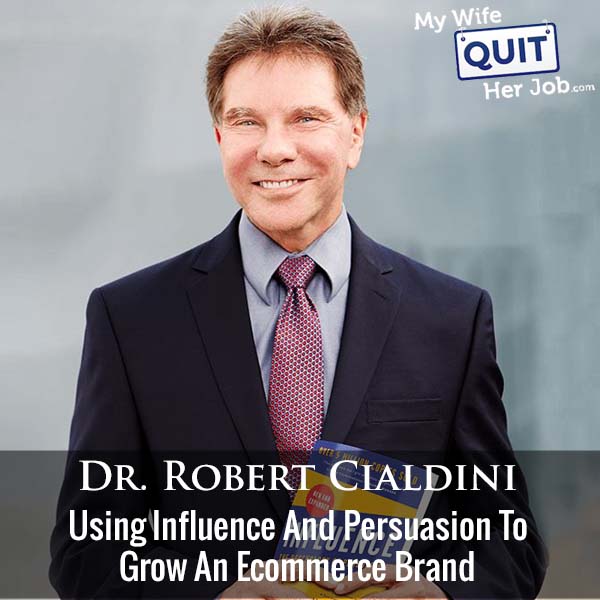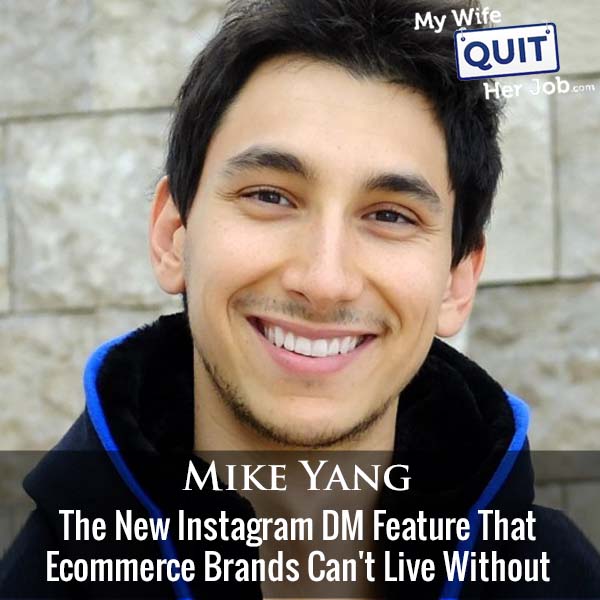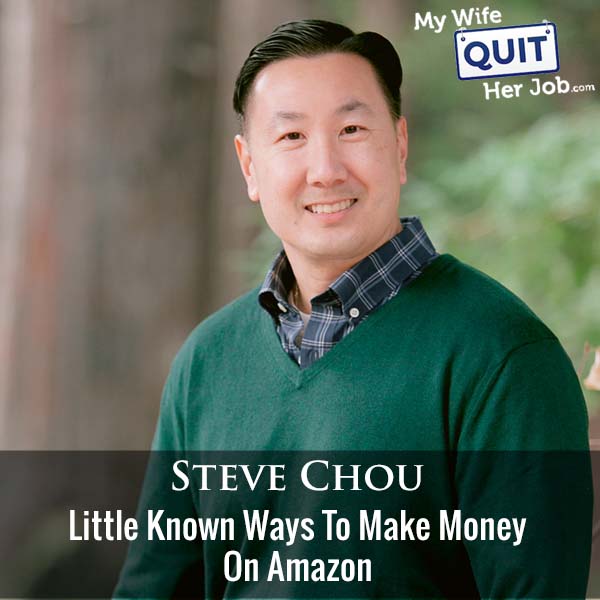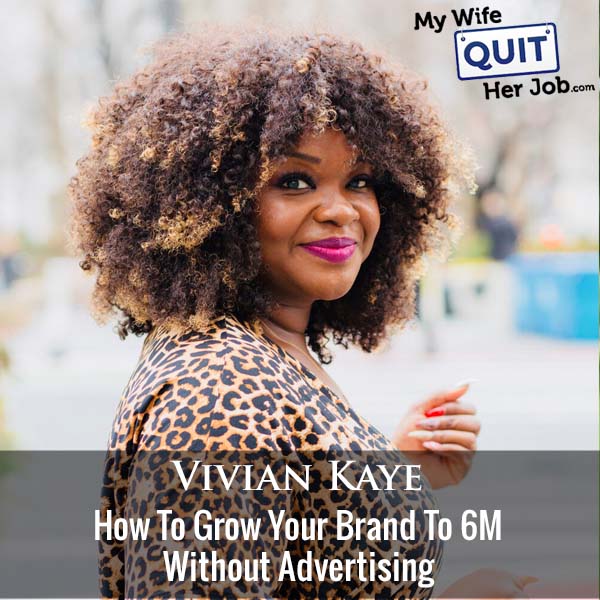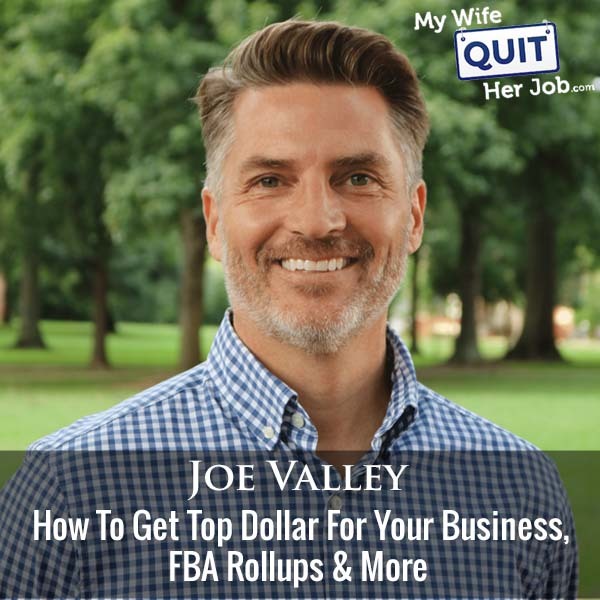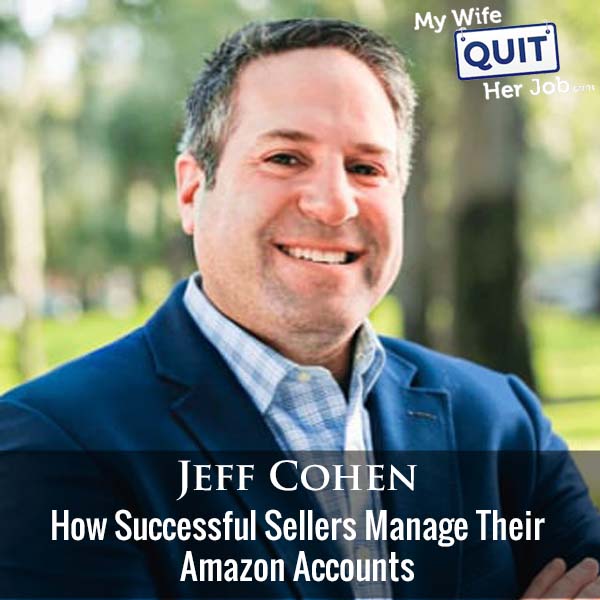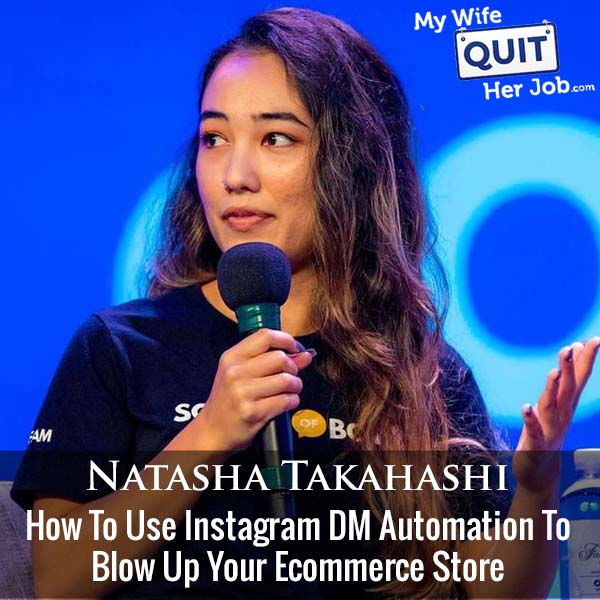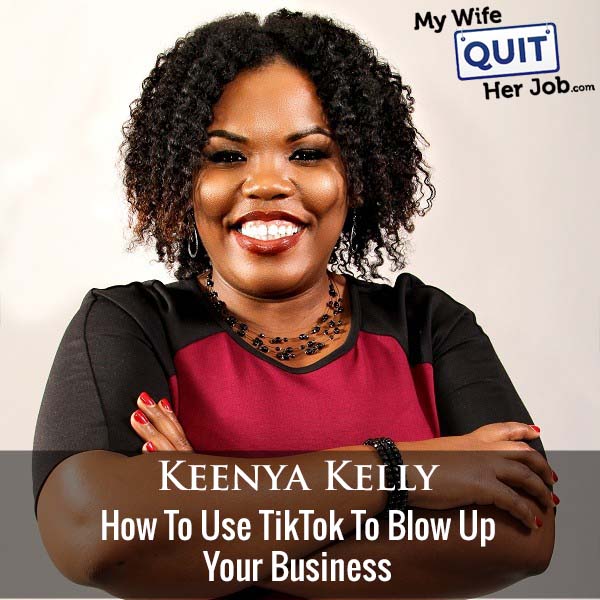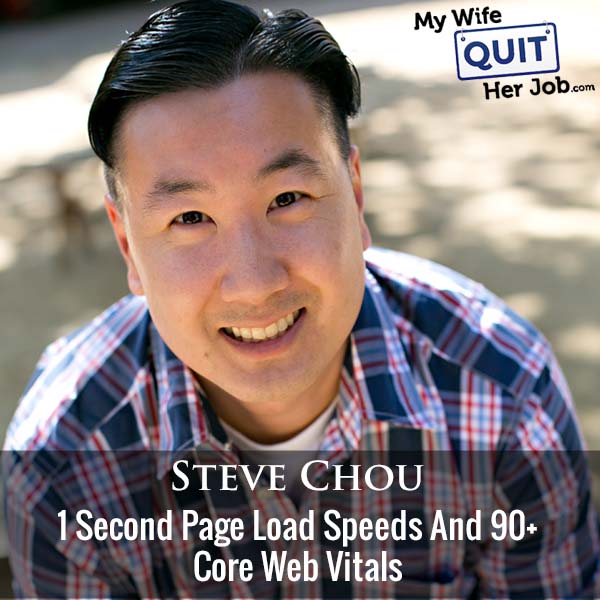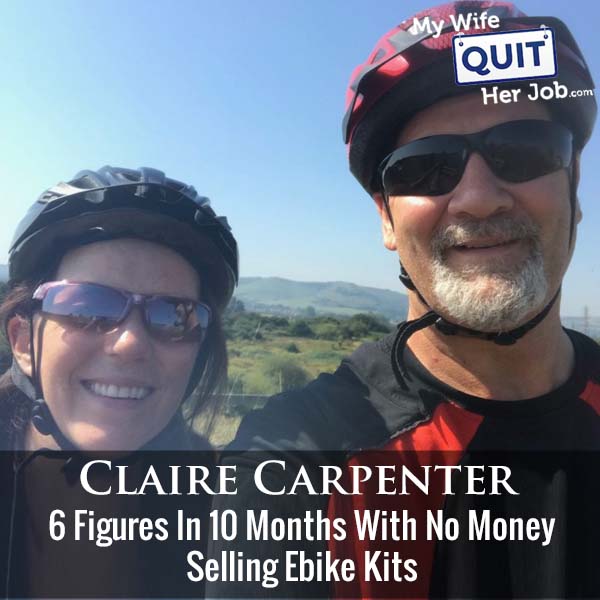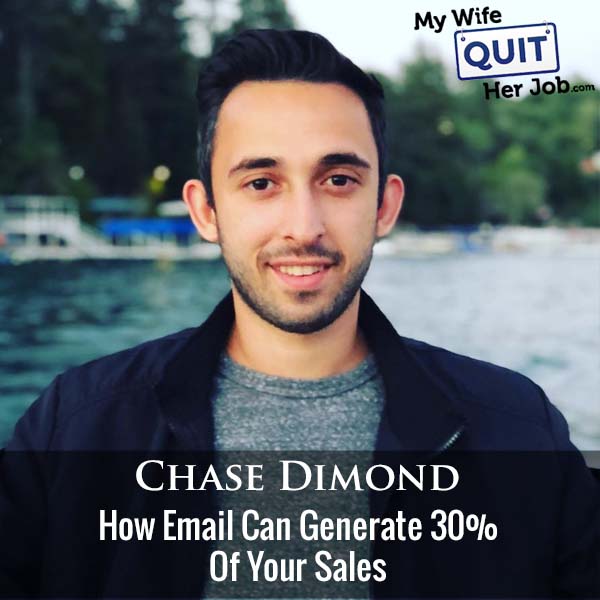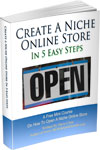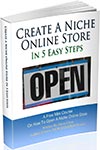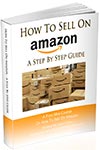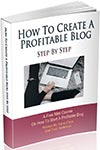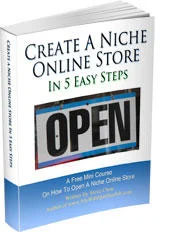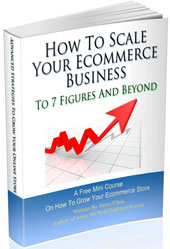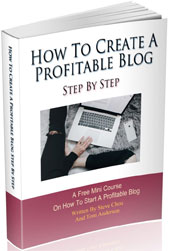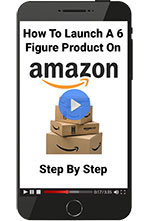Podcast: Download (Duration: 53:12 — 61.2MB)
Today, I’m thrilled to have Shep Hyken on the show. Shep is the founder of Shepard Presentations and he is a customer service experience expert and keynote speaker. His agency works with companies to build relationships with their customers in order to increase repeat business.
In this episode, we talk about how you can stop relying on Amazon for all of your sales and build a loyal customer base for your brand.
What You’ll Learn
- How to build a loyal customer base for your brand without depending on Amazon
- How to implement an effective customer loyalty strategy
- How to get customers to buy again and again
Other Resources And Books
Sponsors
Postscript.io – Postscript.io is the SMS marketing platform that I personally use for my ecommerce store. Postscript specializes in ecommerce and is by far the simplest and easiest text message marketing platform that I’ve used and it’s reasonably priced. Click here and try Postscript for FREE.
Klaviyo.com – Klaviyo is the email marketing platform that I personally use for my ecommerce store. Created specifically for ecommerce, it is the best email marketing provider that I’ve used to date. Click here and try Klaviyo for FREE.
EmergeCounsel.com – EmergeCounsel is the service I use for trademarks and to get advice on any issue related to intellectual property protection. Click here and get $100 OFF by mentioning the My Wife Quit Her Job podcast.
Transcript
You’re listening to the My Wife, Quitter, Job podcast, the place where I bring on successful bootstrap business owners and delve deeply into the strategies they use to grow their businesses. And today I have my friend Shep Hyken on the show and Shep is the founder of Shepard Presentations. He is a customer experience expert and he helps companies build relationships with their customers. Now in this episode, we discussed how you can stop relying on Amazon for all of your sales and build a loyal fan base. But before we begin, I want to thank Postscript for sponsoring this episode.
00:27
Postscript is my SMS or text messaging provider that I use for ecommerce and it’s crushing it for me. I never thought that people would want marketing text messages, but it works. In fact, my tiny SMS list is performing on par with my email list, which is easily 10x bigger. Anyway, Postscript specializes in text message marketing for ecommerce and you can segment your audience just like email. It’s an inexpensive solution, converts like crazy, and you can try it for free over at postscript.io slash div. That’s P-O-S-T-S-E-R-I-P-T dot I-O slash div.
00:57
I also want to thank Clayview, who’s also a sponsor of the show. Now, are you working around the clock to build the business you’ve always imagined? And do you want to communicate with your fast growing list of customers in a personalized way, but in a way that gives you time to work on the rest of your business? And do ever wonder how the companies you admire, the ones that redefine their categories do it? Companies like Living Proof and Chubbies. Well, they do it by building relationships with their customers from the very beginning, while also evolving in real time as their customers needs change. Now these companies connect quickly with their customers, collect their information,
01:27
and start creating personalized experiences and offers that inspire rapid purchase, often within minutes of uploading their customer data. Now, Klaviyo empowers you to own the most important thing for any business, the relationship between you and your customers and the experiences you deliver from the first email to the last promotion. To learn more about how Klaviyo can help you with your own growth, visit klaviyo.com slash mywife. That’s K-L-A-V-I-Y-O dot com slash mywife.
01:53
And then finally, I want to mention a brand new podcast that I recently released with my partner, Tony. Unlike this podcast where I interview successful entrepreneurs in e-commerce, the Profitable Audience podcast covers all things related to content creation and building an audience. No topic is off the table and we tell it like how it is in a raw and entertaining way. So be sure to check out the Profitable Audience podcast on your favorite podcast app. Now onto the show.
02:24
Welcome to the My Wife, Quitter, Job podcast. Today I’m thrilled to have Shep Heitgen on the show. And Shep is actually someone who I met on a panel we were both on for Small Biz Trends, where we discussed how to establish a brand off of Amazon. Now Shep is the founder of Shepard Presentations, and he is a customer service, experience expert and keynote speaker. And his agency works with companies that want to build relationships with their customers and their employees. He’s also a Hall of Fame speaker.
02:50
and a New York Times bestseller and Wall Street Journal bestselling author. He’s got a new book called I’ll Be Back, which is a reference to my favorite movie of all time. And today we’re gonna talk about how you can get yourself off of Amazon and build a loyal customer base for your own brand. And with that, welcome to Show Shep. How you doing? Hey man, it is great to be here. Thanks for having me. Awesome, yeah. I had a really good time at the panel. And as I mentioned earlier, I really enjoyed your presence on that panel and I had to have you on the show.
03:20
Wow, thanks. Well, I appreciate that. Honored and flattered. Not necessarily in that order. Give us a story. How did you get in? How did you get started with customer service? Had that lead to what you do today? Yeah, well, I mean, many of the people listening are entrepreneurs. They own businesses. I started in my first business at age 12 and it was a birthday party magic show business. I was it was great. Twelve years old in my first gig.
03:49
to a bunch of screaming kids. I come home, my mom says, go write a thank you note. My dad says, a week from now, call the parents, make sure they were happy. Ask them how good of a job you did. Were they happy with that? What specifically do they like about the show? Now had no idea that was called customer service or customer experience because it was about showing appreciation. It was about listening to customer feedback. It was about improving the show with that feedback, taking action, process improvement, if you will.
04:17
And that was kind of ingrained in my brain. Now I’ve always been a people pleaser. Even when I had regular jobs, work at a gas station, it’s a self-serve gas station. People pay inside where it’s nice and warm on a cold winter day. But one day an old lady showed up. She was very old. I’d seen her before. It was the coldest day. I went out and pumped her gas. Why? Because it’s the right thing to do. What happened? My manager yelled at me. What? Okay. I know, I know.
04:44
I said, I want her to come back here instead of the station across the street. She’s a very nice lady. And he says, well, she’s going to expect that every time I go with them letter. She’s like 90 and all. it’s like two degrees outside here. Let’s let’s, you know, help her out. So I’m probably aging myself, but back in the day there was like a first full service aisle and all the gas stations that I used to go. Well, there was when I was really, really young.
05:10
I worked at a gas station. My family owns some gas stations and I was like 12 and it was full service. Check the oil, the whole deal. But by the time I was about, well, I was in college and working at summer jobs during high school and in college, it was all self-service. And at one point we actually did go out and reset the pumps manually, but people had to pump their own gas. But eventually, like today, you pump your gas, you go inside and pay for it or you pay for it now at the pump. back then…
05:38
You actually had to come inside. So, but that’s where it started. 1983, I’ve been out of college, actually 1982, been out of college for not even a year. And I start the idea of I’m gonna get into my own business. I’m gonna be a professional speaker, like Zig Ziglar, who I had seen and Tom Hopkins, a sales guy. And I said, I can do that.
06:00
And I, by the way, so I graduated from birthday party magic shows to working in nightclubs and doing corporate events and private adult parties. And it was a regular, you know, thriving business while I was in high school and college. But when I came out of college, I didn’t want to do that the rest of my life. So I started to do, you know, um, I looked at the speaking business and when I went to the bookstore to get research and buy books, there was maybe one shelf of business books, but four or five of them.
06:28
had to do with customer service and experience, which was what I was drawn to, probably because my parents ingrained this in my brain. And that’s where it all started, way back then. I bet that was before you were even born. Perhaps. You young whippersnapper you. You’d probably be surprised at how old I am actually. I know, I know. It’s the ageing genes. I’ve been doing it for a while now, about 30, almost not quite 40 years. And I know I don’t look it, and I know people can’t see me.
06:56
But hey, I’m bald so you can’t see the gray hair. So Shep, what I was hoping to do today was to go in depth on the best way to implement a customer loyalty strategy where you would start. And you know, that panel that we were on, I thought we’d just add a couple more hypotheticals to the mix. Like let’s say I’m an Amazon only shop and I want to focus on my own site and brand. How can I make things memorable? So let’s just start from there.
07:22
Yeah, well, you have to make the experience extremely easy and convenient. I actually about two years ago wrote a book called The Convenience Revolution and we’ve taken some of that and put it into the new book. I’ll be back. And the idea behind this is everything’s streamlined. Everything’s easy. And let’s use Amazon as a comparison. What do people like about it? It’s intuitive. It’s easy. There’s no real hassles. There’s few steps. As a matter of
07:51
If you’ve bought something before, you don’t even have to open up the computer or turn it on and go to the website. just say to your Amazon Echo, I’m not going to mention her name because she’s right behind me. She’ll start talking to me. But hey, I want more toilet paper. And next day or even even sooner than that, you get toilet paper. But the whole idea is any company that wants to compete in the e-commerce world or really any business.
08:20
And I’ll even go as far as saying it’s not just B to C, it’s B to B as well. You have to create this convenient, frictionless experience. And I’ll give you another example completely outside of the typical, you know, let’s sell a product online. Let’s look at the airlines. I love them because everybody knows what it is to fly in a plane. Most people have been on a plane. Most people made reservations, but look at the intuitive, easy process it has when you go online to any of the major airlines and book.
08:49
A ticket. Delta Airlines was the first to do this. And then eventually you checked in online and you printed your boarding pass, but now you just bring it on your mobile device. So this was great. Can you imagine, would you want to do business with an airline that didn’t have the ability to go online and book your ticket? Absolutely not. But it can be hard to mimic the Amazon experience on your own site though, right? Well, I’m going to disagree with that.
09:18
It’s hard to mimic it. It’s not hard to create the convenience that Amazon is. You’ve got to recognize that every time you put a step into the process, you make it harder for your customer. In that book, I mentioned the convenience revolution. I talk about the Wall Street Journal and about how they gained subscribers or didn’t gain subscribers. And one of the things they recognize is that
09:46
every field of information that you ask about your customer, each one had a diminishing return, meaning it was a little less likely that they would get all the way to finally checking out. it could be, boy, I’d sure like to know something that’s not important to the making the sale, but it would be nice to know if they’re male or female. I’m just making this up. It would be nice to know, I don’t know, something else about them. You know, what’s their age.
10:15
That’s information that’s irrelevant to the sale, but it’s great information to have, which once you’ve made the sale, you can go back and ask. Right, yeah. You know what’s really funny about your story just now is I got invited to speak on another person’s podcast, and I’d never heard the podcast before, but they sent me this form that was three pages long, and in the end, I decided not to go on it because I was intimidated by the form. Like, I don’t have time to fill all that stuff out. Right, and by the way, intimidated.
10:45
could sound like it made you back off and maybe because you were felt intimidated. You probably weren’t intimidated by the form, you were aggravated by the form. Yes, that’s probably the right term to use. Like I didn’t have time to fill out, like I have to write paragraphs. And now there are some podcasts like yours that’s so big, huge, wonderful and well accepted that we would be willing to fill out a 10 page form just to be on your show. Seriously though, some…
11:11
podcasts are of that where they wanna make sure that there’s a good fit. And I understand what they’re doing, but at the same time, make it easy on the guest. And a lot of times if they reached out to you, why would you have to fill out the form? Years ago, I wrote a book that was published by Wiley, which is the second largest publisher in the world behind McGraw Hill. And they reached out to me and asked if I would do a publishing project with them. And I said, you know what, tell me what this,
11:39
what you’re looking at, know, give me an idea of, you know, what’s my advance gonna be, et cetera, et cetera. And by the way, the book business has changed, but back then they offered me quite a nice advance. And then they sent me this proposal form for, not for them to propose that I’m the author for them, but for me to propose I’m the author. I need to propose to them why they should use me. And I wrote back, it’s because you called me, that’s all I wrote. And then they wrote back saying, okay, we get that.
12:08
Can you just give us a sample of what we’re buying? So I sent them a bunch of articles, but then I also, they asked for what my platform was, what at least I could give them to make them feel good about giving me this money. And I did give them what my plan was. I told them how many audiences I’m in front of speaking live. I tell them how big my newsletter list is and how I’m going to promote it. And it’s all they needed to put it through, but I didn’t have to fill out that endless amount of questions they seemed to have.
12:38
that most new authors would have as they, you know, want to be considered by Wiley. They were very cool about it, but I also recognize I was very lucky because I would not have gone through that process unless I really wanted to be published by them. Shep, what are some other convenient things that you can do with your physical products brand? With your physical product brand? Well, I mean, let’s talk about the whole concept of convenience to start with. Okay. Number one.
13:07
No friction or low friction. Journey map your business. And this is fundamental to any business. And when I say journey map, that means what does your customer experience from the moment they may find out about you? It could be they see an ad. It could be they do a Google search. They land on your website. They learn about you. They call you. Depending upon the kind of business you’re in, they may come in and see you versus do it all online. What’s the journey?
13:36
Look at every one of those interaction points that you have with your customer. Some of those are people to people. Many of them might be a digital experience, just learning what you have online. Map those out and ask yourself, at any given point, can I make this easier? And figure it out. Also, by the way, internally, what happens behind the scene to drive those touch points that the customers experience on the outside? And there might be some internal processes that you need to manage.
14:05
and make easy for your employees or create a process that’s easy internally to be able to drive a external touch point. So that’s the first step is to create that journey map. And when you start to look at where all these interaction points are, you’ll start to see the friction. I’ll give you the quick six principles. Number two is can technology be built into any of this? For example, I just made an appointment with my dentist and I didn’t have to call.
14:34
That’s so old school. I just go online. I have my log in and I look at their schedule. I look at mine and make my appointment. So easy to do. Number three is can you incorporate a self-service option? Self-service in the buying process? That’s great. Look at what auto dealerships did during COVID. You can go online, create your car, and then the dealership will connect with you and they will bring you a car to look at.
15:01
or it will be waiting for you when you show up. And you did most of everything online. But on a customer service slash support standpoint, do you have frequently asked questions in a knowledge base where customers could go to get basic information? Some of you might have, some of our listeners might have the ability to do online chat. It’s very inexpensive to do AI.
15:23
Infused online chat today, you know years and years ago when I see years or five years ago seven years Would cost a lot of money and would be prohibitive to many people but today You know for a minor setup fee and a monthly fee I don’t know under $100 a month you can you can have you know a chat bot helping your customers so it’s self-service Delivery, can we take it to the customer as we do this interview right now? My lunch has just been delivered. So
15:51
what can we take to the customer and make it easy for them? Number five is a subscription model. By the way, these aren’t necessarily in the exact order, but the subscription model is very powerful. Recurring revenue to the company is always great, but you wanna know what else is great for the customer? To have something show up on a regular basis or to subscribe to a service. We subscribe to magazines and newspapers, but we can subscribe to software.
16:19
That software is a service. We can subscribe to products that we use on an ongoing basis. It can be delivered to us. Companies like Chewy.com started very small, delivering dog food to people’s doorsteps so they didn’t have to go into the pet store and carry a heavy bag of food. Now they’re one of the biggest pet suppliers in the retail world today. And finally, number six is access. You know, if we’re online, there’s 24 hour access to learning about our business. If we’re a business that’s open from nine to five.
16:49
you who are you trying to serve? If you’re trying to serve the public, you’re really only serving the unemployed because you’re the ones who are the ones that come in between nine to five in your store, right? I use a banker’s hours as an example, know, banks are primarily trying to serve the unemployed if that’s, know, but forward thinking banks open their doors a little early and close at six o’clock, have Saturday hours. If you’re a customer service department, are you available when your customers want to call you? If, you know, I remember
17:19
buying a ping pong table from a retailer. Uh, and I had a question about putting it together and I had to call the manufacturer’s number and they closed at five o’clock, you know, Eastern or Pacific or whatever time. you know, it’s not like during the day I’m putting together this ping pong table. No, it’s nighttime and I’m working on this for my daughter, but this is what they had. They said, you know, if you’re calling out of our business hours, please go to Google and just Google the, and you’re having trouble putting it together. This is one of the options. Just Google.
17:49
the model number and the name of the product and a video pops up and that’s what happened. And this was actually on Google, not just their website, I’m sorry, on YouTube. And there was a video about how to put together the ping pong table step by step, all done to music. It was great. So those are the kinds of things I think about when it’s like, how can we be easy to our customers? And you don’t have to have a budget like Amazon to make that happen.
18:18
That doesn’t mean you can’t look at Amazon and try to emulate some of that experience. And by the way, Amazon is who all of us compete with. I don’t care what business you’re in. Maybe you have no online business. Maybe you’re a manufacturer of something. I had a client say to me, I ordered a half a million dollar piece of machinery. It shows up like in the most unexpected time. My gosh.
18:42
Amazon sends me an email to tell me my toilet paper is being delivered. Why can’t this company have warned us that this truck was going to pull up with this piece of equipment? know, look at that. Everybody’s being compared to the Amazons of the world. The, know, who is our competition? That’s who we need to look at. Even outside of our industry, they’re competing for our customers expectation of what services.
19:10
If you sell on Amazon or run any online business for that matter, the most important aspect of your long-term success will be your brand. And this is why I work with Steven Weigler and his team from Emerge Council to protect my brand over at Bumblebee Linens. Now what’s unique about Emerge Council is that Steve focuses his legal practice on e-commerce and provides strategic and legal representation to entrepreneurs to protect their IP. So for example, if you’ve ever been ripped off or knocked off on Amazon, then Steve can help you fight back and protect yourself.
19:38
Now, first and foremost, protecting our IP starts with a solid trademark and Emerge Council provides attorney-advised strategic trademark prosecution, both in the United States and abroad for a very low price. And furthermore, the students in my course have used Steve for copyrighting their designs, policing against counterfeits and knockoffs, agreements with co-founders and employees, website and social media policies, privacy policies, vendor agreements, brand registry, you name it. So if you need IP protection services, go to EmergeCouncil.com and get a free consult.
20:08
And if you tell Steve that I sent you, you’ll get a hundred dollar discount. That’s E-M-E-R-G-E-C-O-U-N-S-E-L.com. Now back to the show. The thing about Amazon is one of the best ways to compete against Amazon is with customer service. Like that live chat option Amazon does not have it. And I know for our store, like if I can get someone on live chat, that’s almost an instant conversion because they have a specific question. And if I can answer it in a timely manner, we got them. Yeah.
20:37
By the way, timely manner is a crucial two words in your explanation just now. I have a friend of mine, I I compete against him in the speaking business. You know, I’m hired to go out and do speeches about this topic. And I know he was the one that was up for consideration and I admire him. And when I talked to my client and said, why did you hire me instead of him? You know what he told me? says, because you call back faster.
21:07
So think about that. Yeah. So assuming that everything is smooth and the customer can check out and get their product on time and everything, how do get them coming back? That’s what I focus on next. I love that. I’ll be back. Yeah. I wonder, you know, someone should write a book on that. Really? Yeah. Yeah. So that new book.
21:30
titled I’ll Be Back, How to Get Your Customers to Come Back Again and Again. That’s exactly what we focus on is what does it take to get a customer to come back? And all the things we’ve talked about so far, creating that frictionless experience. Let me give you a few fundamentals though that I think is, and this by the way is in every one of my books, but we put a chapter just as we do in other books about this. There is something I call creating customer amazement. And in order to get customers to come back, you have to be amazing. But that,
21:59
does not mean it is an over the top, blow me away, I can’t get this anywhere else experience. No, amazement comes, and this is really important, from the predictable and consistent experiences that are just even the slightest bit above average. You just mentioned it a moment ago that one of the reasons you land business is because you are able to respond on that chat quickly, and that is why
22:28
Just doing that gets you business. Is that over the top? No, but this is what you want your customers to say about you. I love doing business with Steve and his company because they always get back to me quickly. The word always followed by something positive is the answer. They’re always knowledgeable. They’re always friendly. Even when there’s a problem, I know they’re always gonna take care of me. So the word always followed by something positive means you’re operating in that zone of amazement.
22:58
hard to achieve. I came up with this idea by listening and studying the Ritz-Carlton back in the 1980s when they won something called the Malcolm Baldrige Award, which would be the equivalent today of winning JD Power Awards for excellence or any other business award. They talked about the little things they do well, the little things, not the blow away things. Sure, you’ve got great stories from the Ritz and many other companies about how they just went above and beyond.
23:25
You can’t go above and beyond for every customer. They don’t give you opportunities to do that. You know, a couple comes into a restaurant, sits down, the server overhears that it’s the couple’s anniversary and surprises them with the little cake at the end of the meal, compliments of the restaurant. To the couple, that’s an above and beyond, but what if the server didn’t hear that? Blow them away with amazing service by simply doing what’s expected, if not a little bit better. So back to the Ritz.
23:54
Horace Schultz, Schultz, depending on what you call, how you pronounce his last name, he said, it’s one thing to say good morning as you walk by somebody. It’s another thing to say good morning, sir, good morning, ma’am. Or if, and by the way, I recognize today the politically correct thing might be just to say good morning in case you don’t know how people identify with themselves. But if you learn their name and you can remember their name and you can say, you know, good morning, Steve, or good morning, you know, just,
24:24
you added a little something to it. That’s that extra little five or 10%. And that’s what Horst says. If you’re 10 % better than average, you’re gonna be successful. So on a scale of one to five, if three is average and you wanna earn fives, do a 3.3 consistently and predictably and people give you a lot more fives than they will anything else. Think about that. Here’s something I noticed with my shop. Anyone who orders from us for the first time,
24:54
We actually sent them a separate email that is from my wife thanking them for their purchase, for their first purchase with us. And then if you have any questions, feel free to just reply to this email. And that one email has gotten a lot of responses. And it’s, and I didn’t think it was anything. It’s actually an auto email, actually. I mean, we don’t tell people this, but it’s, it’s an auto email. And it beautiful. Yeah. Something so simple.
25:18
that can also be automated. It’s an extra touch point that’s positive. Remember we talked about that journey map? Sometimes it’s not just the experience that they currently have, but what can you add to it? And a little touch point. And how about this? again, does, depending on what you sell, you can do this. know, somebody buys, let’s say, by the way, I should be better at this myself, but somebody buys something from us.
25:44
They go onto my mailing list and they see that weekly they get a tip from me. But what if I sent a video, a short video out to them, to all my customers that have bought either this particular book or this particular product and just say, hey, this is automated. It’s been a month since you bought our product. We thought you might like to hear from some other customers how they’re using the product as well. Maybe there’s an idea here that you can use. There’s no selling. There’s telling.
26:13
telling in a positive way that would benefit them. And it’s automated. It’s just an extra touch point. Let’s go to the real estate industry. The average person moves about every seven years. If I buy a home and this real estate agent takes care of me, it might be seven years before we do business again. Do I ever hear from that real estate agent again? What’s happening between that interaction and seven years from now, if I’m the typical person? Most of the time, nothing.
26:42
but the best agents know I’m gonna stay in touch with my clients because they’re gonna use me again most likely. And the renewal process doesn’t start a month before the seven years are here. No, it starts a month after they sold me my home. And it continues with touch points. Maybe it’s a holiday card. Maybe it’s a, here’s some household tips. Here’s some information you might wanna know about the new restaurants that are.
27:09
opening up down the street from you, you know, that kind of thing. And all you’re doing is you’re adding value in the most simplistic way. And by the way, it’s automated. Chef, what are some examples of physical products brands that have done that little extra thing just in your experience of the companies that you’ve worked with? Wow. There’s so many. I wish I could remember the name of the product. I’m a musician. It’s fun. I enjoy it. I go on YouTube. I find.
27:37
music I like, I break it down, I learn it, and I bought this little box. It connects to my computer and it allows me to pause a YouTube video or a Vimeo video, go back 10 seconds, slow it down, and it allows me to keep my guitar in my hands using my foot to push the buttons. I don’t ever have to take my hands off to move the mouse to get it to go back and slow it Anyway, this tool is a great tool to learn music.
28:05
And every once in while I receive an email from them on, here’s an idea to learn music better. know, something you might want to try. I love that. So that’s kind of what we’re talking about. I just bought a view. Oh, actually it was a gift. I bought it and my kids gave it to me for father’s day, but it was the rangefinder for my, for my golf game. So I can find out how far it is. And there’s actually a box to click.
28:35
would you like us to send you tips for your golf game every once in a while? And it asked me, what’s my handicap? So it kind of knows if I’m an advanced golfer or a hacker or a beginner, right? So I just thought, well, that’s brilliant. And there’s no real marketing. It’s just keeping their name in front of me in a positive way. So, Shep, would you say that a lot of this is actually just keeping in contact with your customer on a regular basis so that when they’re ready to buy again,
29:05
They’ll think about your company. Well, isn’t that what we want? And so that’s marketing. What I just talked about. Let’s talk about the actual experience. If you have the opportunity to interact via chat or phone or email or anything, you need to be thinking about what I call the loyalty question. And the loyalty question goes like this is what I’m doing right now, going to get that customer to come back.
29:34
the next time they do business with me or want to buy whatever it is that we sell. And so that loyalty question is focused on the interaction I’m having right now. If a customer calls and they’re upset, am I handling it in such a way that when we’re done with this, the next time they need what I sell, they’ll think of me. So that’s the loyalty question. How do you answer that question, Chip? Well, the answer is, I mean, am I?
30:00
You know, just yesterday I was at my car dealership, a new dealership that I’d never done business with before, and I had a bad experience with them. And I don’t think they recognize that the way they’re handling the interaction right now makes me question whether I ever want to do business with them again in the future. You know, the car’s under warranty, so I’ve got to go to a dealership. I’m just going to go to the closest one they happen to be that way, that close. But they need to understand that every interaction they have with me is planting a seed for what’s going to happen the next time I want to buy another.
30:30
are, okay? It’s that simple. So we’re always focused on the next time every time, because the next time every time does lead to a lifetime of loyalty. When we think of loyalty, we don’t need to think about, what am I gonna do to get the customer to come back again and again and again? We’re gonna have to put together a whole program. Well, you can if you want, but it should start with right now thinking about the next time. The other thing I want you to think about, and we cover this pretty extensively in the book, I’ll be back, is the difference between loyal customers
31:00
and repeat customers, both of which are wonderful to have. One is just a little bit higher level than the other. I want customers to come back to me again and again, but I need to understand why they’re coming back. Do I have what’s called a loyalty program? Like if I’m in the, I buy a restaurant, then you want to come and buy lunch. You every five sandwiches you buy from me, the sixth one’s free. So I give you this card. Is that what’s getting you to come back?
31:28
If I didn’t have the card, would you still come back or come back as frequently? Is the reason you’re coming to my store because I’m logistically closer than the competition? If the competition were to move across the street from me, would you choose them over me? Or if they’re even closer in, would you be willing to pass them to come to me? That’s the difference between repeat customers that, you know, if you’re logistically the reason they come or do they love you and are willing to pass up the competition to come to you, that’s a loyal customer.
31:58
but understanding the reasons why they come back again and again will help you determine what the true loyalty level or just repeat business level. wrong with either one of those, by the way. It’s important to have them. Yep. Do you figure that with surveys? Do you just ask or how do you? Well, and once again, we cover that. Surveys are great, but all they measure is history. How did we do on a scale of one to five?
32:26
give you a five. Oh, thank you very much. That was yesterday. Now we can learn from history to make the experience better the next time or maintain the experience we have. We can learn if somebody’s unhappy and fix the problem if we can identify who it is that gave us that survey. But what we really want to measure is behavior. Did they come back? How often do they come back? When they do come back, how much do they spend compared to if they’re a one-time buyer or even just, you know, what’s the difference between a repeat buyer and a loyal buyer? You can find all this out.
32:56
by looking at behavior, not just reflecting back on your last experience. Okay, give me an example. How would I do that with my store? Do you get a haircut every once in a while? I do. Okay, you don’t need to tell me who you go to. You may go to a salon, you may go to one of these chains like custom cuts or whatever, sports cuts. So what I know is that somebody’s gonna come in here and they’re gonna…
33:25
they typically need to get their haircut once a month. That means they should come back 12 times. And by the way, you can identify customers like, well, that kind of haircut, they’re probably gonna come back five times a year, not four, or 12 times a year. But when you understand that and you start to watch their behavior and watch their buying patterns, you know you’ve got somebody that’s coming back again and again and again. But once again, knowing that behavior is really important.
33:55
I work with some of the companies in this industry and they want to know what got you here and what’s going to get you to come back. And then they watch your pattern and that way they know they’re doing the right job. Not just were you happy with your haircut, where you’re happy with the service. If they keep coming back, you know, you’re doing something right. And again, you want to find out why. that makes sense for something like that, but let’s say it’s an e-commerce product that doesn’t really have a pattern. How would you do that same exercise?
34:25
What is it, if you’re selling one product and out of your business, then, you know, I don’t know what kind of a business that is, but I don’t know what kind of repetition is it’s something that wears out and they come back. But if you’re selling a different, you know, different product lines, different, you know, you want to watch. So I asked me the question one more time. want to make sure I give you the right answer. put some real products. Let’s say I sell apparel. So what are some patterns that I would look at to, to analyze this behavior? Well,
34:55
We know apparel is seasonal, okay? If somebody coming back on a regular basis to upgrade their wardrobe based on the seasons that, know, in other words, we have summer clothes, we have winter clothes, and we can track their buying patterns to determine whether or not they’re buying in the right cadence. And by the way, with enough tracking, enough data, enough customers you’re looking at, you’re gonna start to see patterns emerge to better make decisions that allow you
35:24
to personalize the experience based on different patterns. if, you know, I have a friend of mine, I used to go to a store twice a year when he went on, when everything went on sale, July and January. And I once said to him, you know, you know, I never buy anything via retail pricing because, you know, it’s just the kind of thing you sell is the kind of thing that if I wait just another couple of months, I know it’s going to go on sale. How do you feel about a customer like me? And we were just talking about
35:53
like what you and I are talking about, general customer service. say, Shep, I have a lot of customers that come in and buy, you know, straight retail. But if I could have all of those customers, guarantee they’ll come in on July and January, I would be happy as can be. But we need to understand why customers are coming in, what their behaviors are, what’s behind the incentive for them to keep doing business with us.
36:22
I just wanted to let you know that tickets for the 2022 Seller Summit are now on sale over at SellersSummit.com. Now, what is the Seller Summit? It is the conference that I hold every year that specifically targets e-commerce entrepreneurs selling physical products online. And unlike other events that focus on inspirational stories and high-level BS, mine is a curriculum-based conference where you will leave with practical and actionable strategies specifically for an e-commerce business. And in fact, every speaker that I invite
36:50
is deep in the trenches of their own e-commerce business. Entrepreneurs who are importing large quantities of physical goods and not some high-level guys who are overseeing their companies at 50,000 feet. The other thing I can assure you is that the seller summit will be small and intimate. Every year we cut out ticket sales at around 200 people, so tickets will sell out fast and in fact we sell out every single year many months in advance. Now if you’re an e-commerce entrepreneur making over 250k or $1 million per year in revenue,
37:17
We are also offering an exclusive mastermind experience with other top sellers. Now the Seller Summit is gonna be held in Fort Lauderdale, Florida from May 4th to May 6th. And as of right now, we’re almost already sold out of mastermind tickets and we’ll be raising the price every month leading up to the event after Cyber Monday. For more information, go to sellerssummit.com. Once again, that’s sellerssummit.com or just Google it. Now back to the show. I guess, once you find that information out,
37:46
We’ll just use that example with your friend. I mean, the reason people are coming in is because of a sale, right? Well, true, but many other stores have sales in July and January as well. You know, I was just recently, gosh, over the summer in Las Vegas in July. Can you imagine being in Las Vegas in July? I don’t remember, but the days I were there were the days they hit the record 114, 116 days. And I remember walking into one of my favorite stores. said,
38:16
So I know it’s July, what’s 70 % off today? And the guy goes, oh, I said, I come in here once a year. And he laughed at me. He goes, if all of our customers would just come back once a year, we’d be pretty happy. But I mean, even if it is on sale, of course I didn’t find anything 70 % off, but I found some good value. I guess what I’m trying to ask here, Shep, is like, how do you implement this strategy here? Like once you have the information, what do you do with it?
38:44
Oh, what do you do with it? Learn why and then act accordingly. So you need to understand your customers. Look at what Nike does. And by the way, I keep grilling me and asking me the same question until I give you the answer that you want because I can go so many different directions. Nike, if you join the Nike, I call it a membership program, loyalty program, which by the way is free, you what’s the big perk? They’ll let you know about.
39:10
items before they’re actually released. They’ll give you information about what your interests are, free returns, things like that. But let me tell you, the key here is that they know you buy just running shoes or you buy just court shoes or you buy some other type of shoe and they’re able to segment you into the different areas. so there are, you know, and they know based on buying patterns of people who are interested in this type of shoe, you’re going to need a shoe.
39:39
like this, you’re going to be interested in this type of, and they, they, they give you good information. The sales side of it, it’s, this is all marketing, but they’re not always simply asking for an order at the end of every message they send. That becomes too salesy. Right. Companies that I think are really great at doing this, figure out who their customers are, understand their customers behavior and give them information that makes them, that endears that customer to them even closer. So did I get to the answer of your question?
40:09
Yeah, I’m just so we talked about a bunch of things already like loyalty versus repeat and obviously loyalty is better. What’s kind of confusing about all this is like these loyalty programs. I kind of categorize those in like under repeat business, right? Because they’re buying because. Right, that’s the point. It be called a loyalty program. It’s a marketing program. It’s a you know, Amazon has a membership prime membership. It is some people mistakenly call it their loyalty program. But the reason
40:39
customers are often loyal to it. Although people like, know, why did Jeff Bezos include all these movies and TV shows and Amazon Prime? He says, I wanted to give them a reason to keep subscribing, even though, beyond just shipping, beyond just buying product from us, because there’s a benefit to them getting $129 a year from, I don’t know, how many millions, 70 million customers or something like that.
41:08
It really is good. But here’s what drives some of that loyalty. If I pay $129, I want to get my money’s worth. I want to get all the free shipping I can, know, expedited shipping. I want to take advantage of the discounts that come when I go into a Whole Foods. I want to take advantage of, you know, the movies and TV shows. By doing that, they are separating me from their competitor simply because I paid for the privilege of doing business with them and I want my money’s worth.
41:37
I mean, it seems to me that the best way to get true loyalty is to do what you originally said, which was just be like 0.1 % better than average, right? 10 % better than average. 10 % better. So I guess the question then becomes, how do you figure those things out? Yeah, well,
41:59
Obviously, you do want to take measurements there. You want to look at your customer satisfaction scores. If you do any kind of a survey, your net promoter scores, because it gives you a baseline understanding of what your customers think of you. And if you see deficiencies, figure out where they are and build on them to increase the scores. So you get a score today that’s your benchmark and you recognize opportunities to improve.
42:25
Do look at your surveys three months from now. And if you see improvement, you know you’re heading in the right direction. Can these surveys that you’re talking about, can you just give me some examples of key questions to ask in those surveys? Sure. I love simplicity. So the net promoter score is one of my favorites, although some people are pro and some people are against. The reason I like it is it’s a general sentiment of how the customer feels about you, which is on a scale of zero to 10.
42:53
What’s the likelihood that you would recommend us to a friend, a colleague, family member? Nine or tens are promoters, hence net promoter score. Sevens and eights are passives, meaning you don’t know if they’re happy leaning toward being a promoter or unhappy leaning toward being what’s called a detractor, which are the sixes and the less. Then there’s, you know, general CSAT, scale of one to 10, one to five, whatever. Are you happy? Were you happy with the service? Did you enjoy the product? Did you enjoy the experience? I love.
43:22
American Airlines and Delta Airlines. I don’t know about the other lines, but they said, would you be willing to stay on the phone after you talk to the agent for a one question quick survey? And that is next time you do business with us, would you want to have the same agent? One for yes, two for no. Wow. That tells a whole lot, doesn’t it? Yes, it does. Yeah. And one simple question with a yes or no answer. I always like to follow questions. If you’re doing surveys like this, a simple CSAT.
43:51
or NPS, can do one or two, because literally they take seconds for the customer to fill out. Ask the open ended questions, a final question. Is there anything you could think of that would make doing business with us better? And I always add, this is my take on it, is there one thing you can think of that would make doing business with better? I call that the one thing question. Why did you give us the score?
44:18
If you, certain survey software allows you depending upon the score, that’s the next question you would ask. So if somebody on a scale of zero to 10 gave us a 10 with the net promoter score, you could say, thank you. Is there one thing you can think of that would make it even better? But if somebody gave us a six, that question might be, is there something we could do that would have given us one higher, you know, like one higher number?
44:46
I’m not phrasing it correctly, but you get the idea. yeah. Basically, you’re just trying to get them to prioritize what the one thing that they’d want changed that would make the biggest impact, right? Yep, yep. And by the way, if I get enough customers telling me the same one thing, that’s an opportunity I can’t pass up. I mean, obviously somebody would say, yeah, make the product half price. Well, that’s not necessarily reasonable. Yeah, it’s funny because…
45:13
Pricing is often like something that people will put down for that. Cause we have this survey that goes out automatically for anyone that buys. And we do get that price number all the time, which it’s something that we don’t want to, we don’t want to compete based on price basically. Yeah, I know. And they’re saying that sometimes, you know, maybe they really mean it, but most of the time it’s like, yeah, sell it to me at half price. Yeah. Tongue in cheek, I guess. That is tongue in cheek. And hopefully they’ll say, but seriously,
45:42
And here’s my real comment. It seems like, at least in my experience, like whenever we get someone on the phone or on chat, it’s like an easy sale and people are really happy and they’ll come back. I guess the challenge is adding that human element to an online business on a regular basis and scale it that way. Well, you can do it by doing it real human element, or you can automate as you did with that thank you note from your wife, as you mentioned earlier.
46:10
Do you remember a company called CD Baby? Yeah, of course. I love Derek Sivers. Did you ever buy anything? I never did. I just, know his story very well. All right. I’m 99 % sure it was CD Baby that when I bought something, I received an email, you know, hey, this is Steve, but I’m not a real person. I’m the digital assistant, but that doesn’t mean I can’t help you if you don’t ever, you know, it’s very funny when I read this and, and I go, oh, this is brilliant. Admitting it’s digital.
46:39
but giving you a human experience and making me smile. That’s pretty cool. And so there’s no reason why you can’t do something ongoing as, and by the way, I believe that’s part of what makes us all successful. If we can create a flow of information, you know, know me, I’m a customer service and experience expert. I get on stage and do speeches. We have trainers that go out and deliver my content. We have books that I write and that we sell, but you want to know what I really am? I’m a media company.
47:09
My job is to constantly put out information that’s gonna make my customers and clients wanna keep doing business with me, love what I do, talk about what I do. And there’s no reason a company can’t put out information about what they sell and ways to improve their customers’ lives or experiences with whatever they’re buying on a regular basis in a way that makes them feel they’re connected, even if it’s digital. I think that’s the future. Like Disney owns us, owns my family.
47:38
I remember this, I remember this one experience where I was at a toy store and my, my son wanted a Lightning McQueen and I was like, Hey, look, these matchbox cars, they’re, they’re like 10 X cheaper. I’ll you what, I’ll buy you 20 matchbox cars instead of buying your one Lightning McQueen. But he still wanted the Lightning McQueen because of media, because he watches cars and he wanted to play in front of the movie. It’s that cool. Now I’ll share something else with you. It reminds me of the Disney example that you, that you just did. mean, you know, if.
48:08
I mean, does Disney own you? Well, actually, they own you in another way. If you’ve been to a Disney theme park, that becomes your new expectation. And by the way, if you went to Disney and had a great experience, that’s your new expectation of what all customer service should be with any company that you’re doing business with. That’s why the rock star businesses today are setting expectations and raising the bar that laggards must keep up with or
48:37
they need to fear losing business to these rock stars. And they don’t even have to be in our industry. Why can’t you be as good as that? The shoe repair down the street, they always hit the, when they tell me it’s ready on Thursday, it’s not Friday when they tell me it’s ready, no, it’s Thursday. They always do that. Why can’t you do that for me? Shep, I wanna hear about I’ll Be Back. Tell me about this book. I’ll Be Back.
49:03
So the book titled I’ll Be Back, How to Get Customers to Come Back Again and Again is just about everything we’ve talked about today. And it’s my eighth book and I’m excited about it. Yeah, there’s a little Terminator feel to that term, I’ll be back. But you know, Arnold Schwarzenegger, when he did this in the first Terminator, he came back to blow up that police station. You remember? Yes, of course. Not a good thing. But in the second one, he came back as a good guy. And when he said I’ll be back, it was kind of tongue in cheek with a little wink.
49:33
more or less, and it was a good reason. And he’s used it, that Terminate movie. So while I didn’t start out thinking about the Terminator, I thought, well, why not throw a little Terminator language in there? So I’ve got a chapter in there about why customers would terminate the relationship with you, why they wouldn’t want to do business with you, actually, why you would want to terminate a relationship with them. There’s just a few phrases sprinkled throughout here and there that might bring you back to it. But that’s what it’s all about.
50:01
getting your customers to come back again and again. If that’s important to you, then you should go to Amazon today and pick up the book. I mean, there’s been a lot of studies where if you can just increase your repeat retention rate by like a small percentage, it can lead to like a vast increase in your overall revenue. An exponential increase. Right. The loyalty effect written by Fred Reichelt years ago talked about that 5 % increase in customer retention turns into something potentially huge. 75%, yep.
50:30
Yep, on average. We have a client that when she told me what her problem was, she’s losing millions and millions of dollars in churn because they just aren’t doing things right. And I said, what would it be worth? I mean, how much money would you gain if we reduce that by just like 3 %? She says, that could be worth a million dollars. And I said, can I work on commission?
51:00
Cool. Well, Shep, I would imagine, I haven’t read it yet, but it’s on my list of books to read once it comes out. But once, I would imagine the book is a lot more in depth than what we kind of talked about in today’s episode. Oh, sure it is. And it also will lead you to think about ideas. And there’s questions at the end of each chapter that you can sit down with your team and have a meeting with and discuss. I want this book not to just be read, I want it to be used. Cool.
51:28
Well, Shep, where can people learn more about you in general? Just go to hyken.com, H-Y-K-E-N.com. Okay, and if they want to get a hold of you, there’s a contact form on that page as well? definitely. And if anybody has a question, just reach out. I’m happy to either, one of two things, I will either send you back an email, but if it turns into a small novel that I’m writing, I’ll probably pick up the phone or I’ll send you video or something. Cool. Well, Shep, thanks a lot for coming on the show, man. It’s been a pleasure.
51:55
Steve, it has been my pleasure. Thank you for having me. Let’s do it again. Hey, how about this? I’ll be back.
52:05
Hope you enjoyed that episode. Now Amazon continues to get more competitive every single year and you can’t rely on them as your sole source of income. For more information about this episode, go to mywifecoupterjob.com slash episode 378. And once again, I want to thank Klabio, which is my email marketing platform of choice for e-commerce merchants. You can easily put together automated flows like an abandon card sequence, a post purchase flow, a win back campaign. Basically all these sequences that will make you money on autopilot.
52:31
So head on over to mywifequitterjob.com slash KLAVIO. Once again, that’s mywifequitterjob.com slash KLAVIO. I also want to thank Postscript, which is my SMS marketing platform of choice for e-commerce. With a few clicks of a button, you can easily segment and send targeted text messages to your client base. SMS is the next big own marketing platform, and you can sign up for free over at postscript.io slash Steve. That’s P-O-S-T-S-E-R-I-P-T dot I-O slash Steve.
52:59
Now I talk about how to these tools on my blog, and if you are interested in starting your own eCommerce store, head on over to mywifequaterjob.com and sign up for my free six day mini course. Just type in your email and I’ll send you the course right away. Thanks for listening.
I Need Your Help
If you enjoyed listening to this podcast, then please support me with a review on Apple Podcasts. It's easy and takes 1 minute! Just click here to head to Apple Podcasts and leave an honest rating and review of the podcast. Every review helps!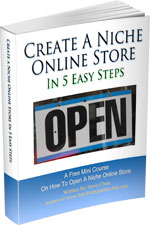
Ready To Get Serious About Starting An Online Business?
If you are really considering starting your own online business, then you have to check out my free mini course on How To Create A Niche Online Store In 5 Easy Steps.
In this 6 day mini course, I reveal the steps that my wife and I took to earn 100 thousand dollars in the span of just a year. Best of all, it's absolutely free!

